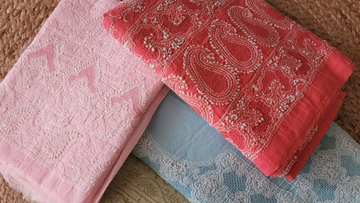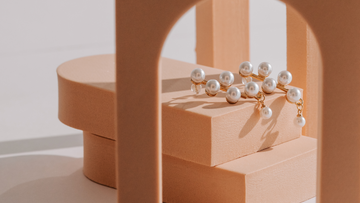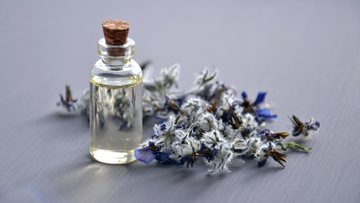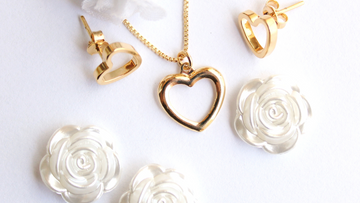Chikankari: The Ethereal Tapestry of Embroidered Elegance

Introduction:
Chikankari, an age-old art form of delicate embroidery, has graced fabrics for generations, weaving a craftsman's poetic expression on cloth. Rooted in the heart of Lucknow, India, this exquisite form of stitching has endured through centuries, epitomizing a harmonious blend of skill, dedication, and tradition.
The art of stitching is an ethereal expression of beauty –emerging as a craftsman’s poem on fabric –having been in vogue for years. Delicate work, hours of labor and skills passed on generation to generation have adorned the present-day journey of stitching in India. Very few forms of embroidery embody this tasteful journey as well as chikankari, the staple and famous fabric-work originating from Lucknow.
The Artistry of Chikankari:
Chikankari is an intricate embroidery technique, employing stitches like backstitch, chain fasten, and hemstitch on muslin. The essence of chikankari lies in its meticulous stitches, meticulously crafted by skilled artisans to bestow an aura of opulence and perfection upon the fabric. As the demand for hand-woven creations grows, chikankari has found a new avenue in the online market, gaining global recognition.

Historical Roots and Evolution:
Originating in Bengal and later flourishing in Lucknow during the 18th century, chikankari found patronage under the nawabs of Oudh, achieving unparalleled refinement. Characterized by its simplicity in design and limited motifs, chikankari relies on the intricacy and uniformity of the weaving. Though it faced the risk of fading into obscurity, a resurgence of interest in the mid-20th century revitalized this exquisite craft. The workmanship was at risk of ceasing to exist, however a resuscitated interest in the second part of the twentieth century added to its reestablished imperativeness.
Mastery of Stitching:
Mastering chikankari demands years of practice, with artisans dedicating themselves to achieving precision in every stitch. With 32 distinct stitch types, ranging from flat to raised and open, chikankari traces its origins back to the Mughal dynasty. Initially, it graced muslin with white thread, drawing inspiration from Persian motifs. Over time, it evolved to encompass a spectrum of fabrics, from chiffon to silk, with the latter standing as the pinnacle of this regal art form.
A major staple of fabric diversification for this form of embroidery is that the fabric remains thin enough for the needle to puncture through. Chikan work has today been adapted and adjusted by added groupings like Badla, Kamdani, Mukaish, sequin, bead and mirror work, which gives it a more extravagant and more refined allure. This craftsmanship when performed on textures like silk, which is light, draws out the excellence of the weaving.

For instance, in terms of high-priced work, chikankari is now carried out on the silk form tussar –which is known for its versatility as a fabric and natural goldish hue. More affordable silks like mulberry and muga offer a more accessible use of the artisanal embroidery to the broader clientele. The silk chikan work sarees are the most besotted style amongst the multitude of chikankari sarees that are accessible in the market today. These sarees give the ladies an ideal desi look with its charming motifs, botanical prints, applique work and pastel tones. Meanwhile, the style has found longevity in the form of anarkalis, sarees and even desi-style westernized outfits like tops, gowns and dresses.
A Universal Adornment:
Chikankari transcends gender boundaries, adorning men's kurtas, sherwanis, suits, and even smaller accessories like handkerchiefs. This art form has expanded to encompass tablecloths, pillow covers, cushion covers, bed linens, and various other items. Creepers and floral motifs, such as roses, lotuses, and jasmine, dominate the chikankari landscape, with the choice of stitch and thread thickness determining the final effect.
The Intricate Process:
Chikankari's meticulous process involves pattern block printing on the base fabric, followed by skilled embroidery work. The finished piece undergoes thorough washing to remove any trace of the printed pattern. This multistep process ensures the highest quality and attention to detail in every chikankari creation.The embroiderer stitches the pattern on it and the completed piece is altogether washed to eliminate any hints of the printed piece of block example. The process of chikankari hence includes fundamental steps like planning, etching, block printing, sewing, weaving and lastly washing for final details.
Revival and Recognition:
Efforts by government bodies and organizations like SEWA have breathed new life into the chikankari industry, fostering employment, ensuring fair wages, and promoting marketing channels. Renowned designers like Sabyasachi Mukherji and Manish Malhotra have further elevated chikankari to global acclaim, showcasing its enduring relevance and appeal. Diversification of chikankari has allowed it to stay in tune with latest fashion trends; it remains one of the most trusted and famous forms of embroidery, perfect for wear for both men and women as part of sarees, kurtas or even modern desi-but-global dresses.
Conclusion:
As the summer sun casts its warm glow, chikankari emerges as a beacon of cool comfort and timeless elegance. This enduring art form, rooted in tradition and embraced by high fashion, stands as a testament to the enduring legacy of handloom craftsmanship. Chikankari, with its gossamer finesse, continues to be a cherished export from India, bridging the past with the present in a tapestry of embroidered splendor.
Designers like Sabyasachi Mukherji and Manish Malhotra have over the years released high-end fashion collections centered on chikankari, furthering its global recognition. Hence, as evidenced by its surviving the perils of commercialization of small businesses and handicrafts, chikankari is here to stay.
At the point when the summer Sun grins unequivocally, you realize it is an ideal opportunity to praise cool muslins and delicate reflections. Conventional yet molded in a fashionable contemporary wind, the imperishable chikankari comes to your cool salvation. Chikan work with its gossamer quality has become one of India’s most sizzling fares and is a declaration of high fashion finding its roots in traditions of handloom passed generation to generation.




